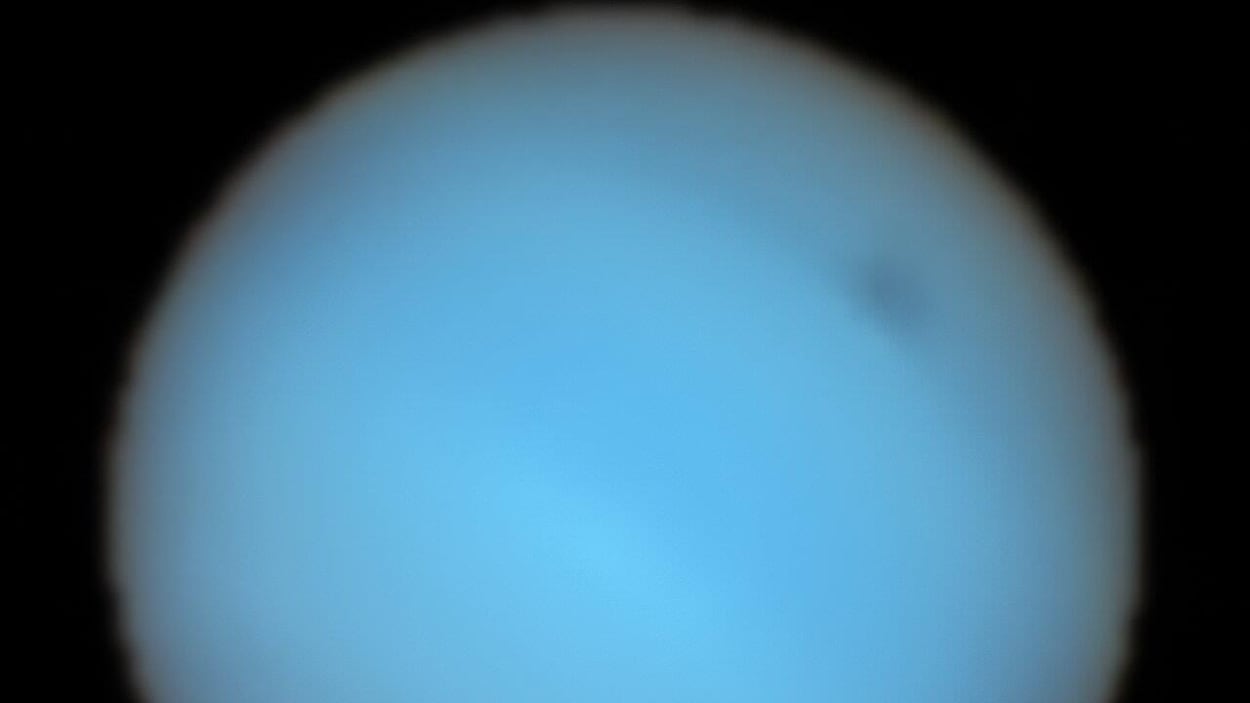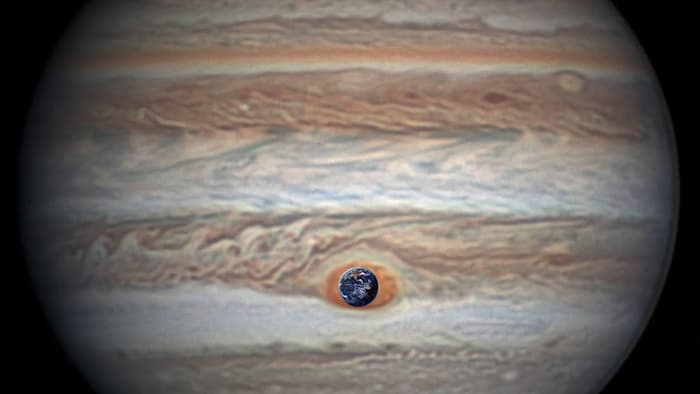A large dark spot has been observed for the first time in Neptune’s atmosphere using a ground-based telescope.
The discovery was made using the MUSE spectrograph, one of the instruments of the European Southern Observatory’s (ESO) Very Large Telescope (TGT) installed in Chile.
These occasional structures against the blue background of Neptune’s atmosphere are a mystery to astronomers, and new data provides additional clues about their nature and origin.
The organization notes in a press release.
A large dark spot was first discovered in Neptune’s northern hemisphere by the Voyager 2 probe in 1989. Since then, it has appeared and disappeared every few years.
This image shows observations of Neptune using the MUSE instrument on the European Southern Observatory’s Very Large Telescope.
Photo: European Southern Observatory/B. Irwin et al.
Neptune 101
- The planet is the eighth and last planet in the solar system.
- It is located 4490 million kilometers from the sun.
- It receives 900 times less light than Earth, so the average temperature on its surface is -213 degrees Celsius.
- Neptune has 13 satellites, two of which (Nereids and Triton) can be seen from Earth.
- The planet has four rings made of dark matter, and is therefore difficult to observe.
Common stains
Several large spots have been discovered in the atmospheres of giant planets. The most famous is undoubtedly the Great Red Spot on Jupiter, which is considered the largest storm in the solar system. This 16,000 km wide anticyclone has been around for more than 185 years.
The Great Red Spot on Jupiter is 1.3 times the diameter of Earth.
Image: NASA
The spot on Neptune, first identified by Voyager 2, is much less known. It will be an anticyclonic storm like Jupiter’s, but its interior will have relatively few clouds.
For this reason, the theory put forward by some scientists so far is that the spot is caused by A delicate
In the clouds.
New notes
Observations conducted by the Hubble Telescope in 2018 made it possible to observe the presence of several dark spots in Neptune’s atmosphere, including one in the planet’s northern hemisphere.
Since these dark spots are not permanent structures in Neptune’s atmosphere, astronomers associated with the TGT quickly rotate them in the direction of Neptune.
Using the MUSE instrument, Professor Patrick Irwin and his colleagues at the University of Oxford, UK, were able to decompose sunlight reflected from Neptune and its spot into its different colors (wavelengths) and obtain a 3D spectrum.
The team was thus able to analyze the stain in more detail than before.
I am very happy that I was not only able to discover a dark spot on Earth for the first time, but also that I was able to record the reflectance spectrum of such a spot for the first time.
The astronomical team’s analyzes show that these spots are most likely the result of the darkening of air molecules in an area of the atmosphere located below the main layer of fog, when the latter mixes with the ice present in the planet’s atmosphere.
In addition, the spectrum allowed astronomers to better determine the height at which the dark spot was located in the planet’s atmosphere. The spectrum also provided information about the chemical composition of different layers of the atmosphere, which helped the team understand why the spot appears dark.
Unknown type of cloud
The observations also revealed a very rare type of cloud in the form of a bright patch next to the large dark patch. We have discovered a rare type of deep, bright cloud that has never been recognized before, even from space
Explains American astronomer Michael Wong, co-author of the study and researcher at the University of California, Berkeley.
This bright cloud is located at the same level as the main dark spot in the atmosphere. They are therefore a completely new type of cloud compared to the small, high-altitude methane ice clouds observed previously.
“, notes ESO.
One giant step
According to Michael Wong, these observations appear An amazing increase in humanity’s ability to observe the universe
.
Initially, we could only discover these spots by sending spacecraft, such as Voyager, there. Then we gained the ability to distinguish them from a distance thanks to Hubble. Finally, technology has evolved to allow us to do this from Earth.
Details of these observations are the subject of an article published in the journal Nature astronomy (A new window) (in English).
Lower withdrawals since 2019
Moreover, another study (A new window) Research published earlier in August shows that there is a link between the abundance of clouds in Neptune’s atmosphere and the 11-year solar cycle.
The discovery is based on three decades of Neptune observations taken by NASA’s Hubble Space Telescope and the W.M. Keck Observatory in Hawaii, as well as data from the Lick Observatory in California.
Currently, observed cloud cover on Neptune is very low, with the exception of a few clouds hovering over the South Pole. The abundance of clouds normally seen in the ice giant’s mid-latitudes began to disappear in 2019.

“Hardcore beer fanatic. Falls down a lot. Professional coffee fan. Music ninja.”








More Stories
Sylvain Cosette announces a surprise to the students of the Felix Leclerc School
Two ways to fix the bug that prevents you from sending videos
Google has registered a trademark on the name of the AI-generating camera in its next smartphone